Have you ever had a door, window, or other household item that makes that annoying squeaky noise? It’s not only irritating but can also be embarrassing when you have guests over.
Well, an anti squeak spray may just be the solution you need. We will discuss what anti-squeak spray is and why it’s essential in every household. We’ll also guide you on how to use it correctly and tell you about the common application areas for the spray.
Additionally, we’ll touch upon the science behind it and its benefits. Lastly, we’ll highlight some things to avoid while using anti-squeak spray so that you can make the most out of it without damaging your household items.
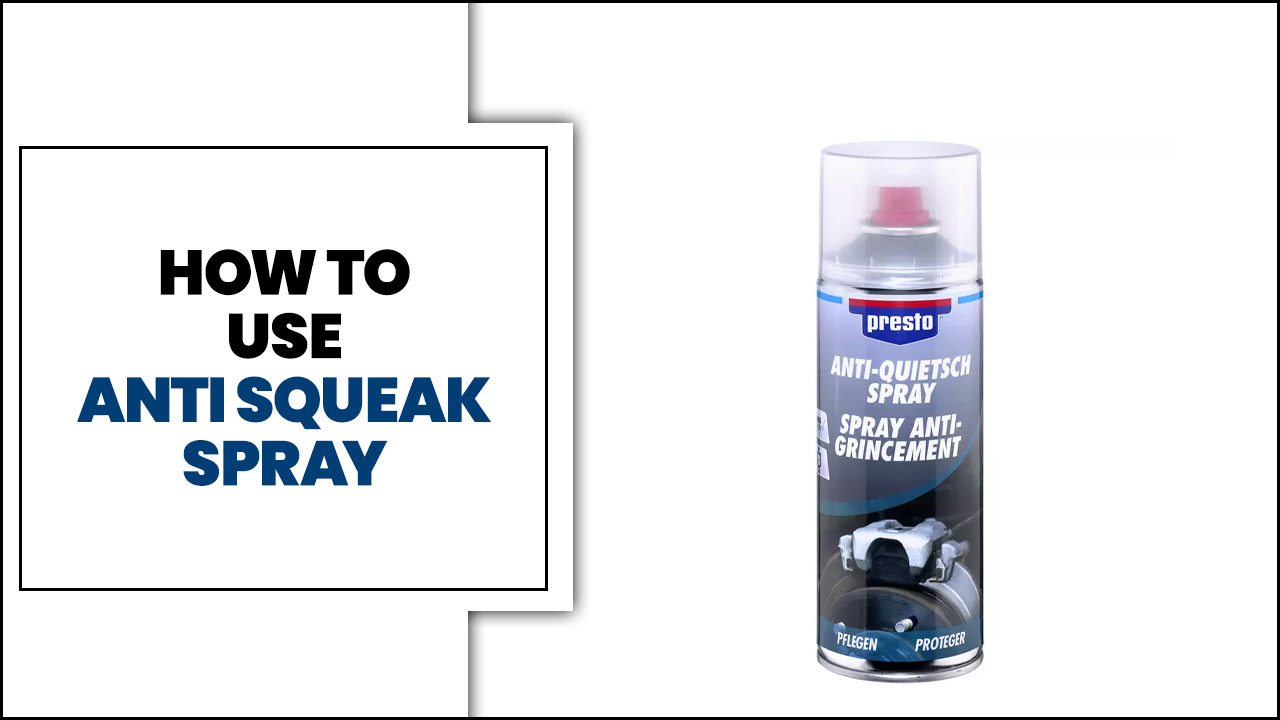
Understanding Anti Squeak Spray
Anti Squeak Spray is a versatile solution that serves multiple purposes. Its primary benefit lies in reducing friction and noise in various applications. By using Anti-Squeak Spray, you can ensure smoother operation and minimize irritating noises. Selecting the right type of Anti-Squeak Spray for your specific needs is essential.
Different formulations and properties are available, catering to different requirements. Industries such as automotive, manufacturing, and furniture often rely on Anti-Squeak Spray to improve performance and durability. With its grease-like properties, Anti-Squeak Spray offers effective lubrication while preventing squeaks and squeals.
How To Use Anti Squeak Spray Correctly
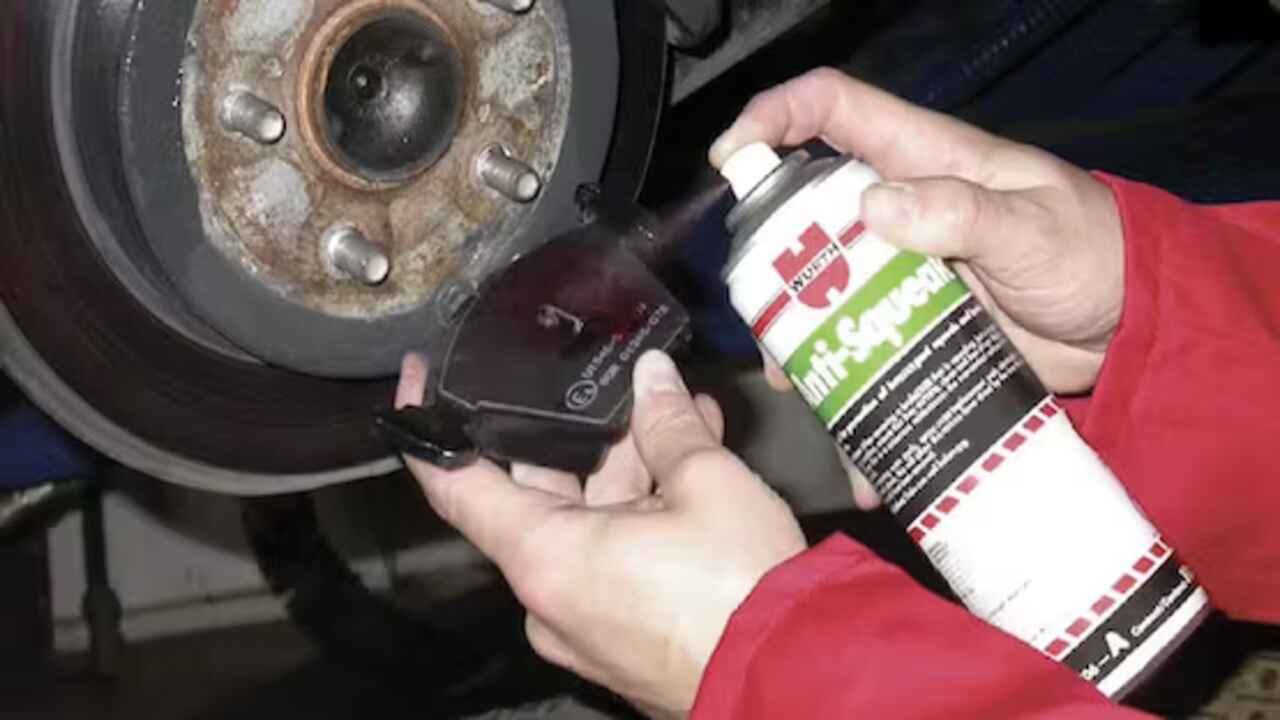
Using anti-squeak spray correctly can help eliminate annoying and distracting noises in your home or vehicle. Here are some steps to follow when using anti-squeak spray. Following these steps, you can use anti-squeak spray correctly and enjoy a quieter and more comfortable environment.
- Identify The Source Of The Squeak: Before applying the spray, locate the area where the noise comes from. This could be a door hinge, a window frame, or any other moving part causing friction.
- Clean The Area: Use a clean cloth or brush to remove any dirt, debris, or old lubricant from the affected area. This will ensure that the spray can penetrate and provide optimal lubrication.
- Shake The Can: Give the can a good shake to mix the contents before using it. This will help ensure that the spray is applied evenly and effectively.
- Spray The Affected Area: Hold the can about 6 inches away from the target and apply a light, even coat of anti-squeak spray. Be sure to cover all moving parts and areas of friction.
- Allow Time To Dry: After applying the spray, give it time to dry and set. This will allow it to form a protective layer and reduce friction, eliminating squeaks.
The Best Time To Apply Anti-Squeak Spray
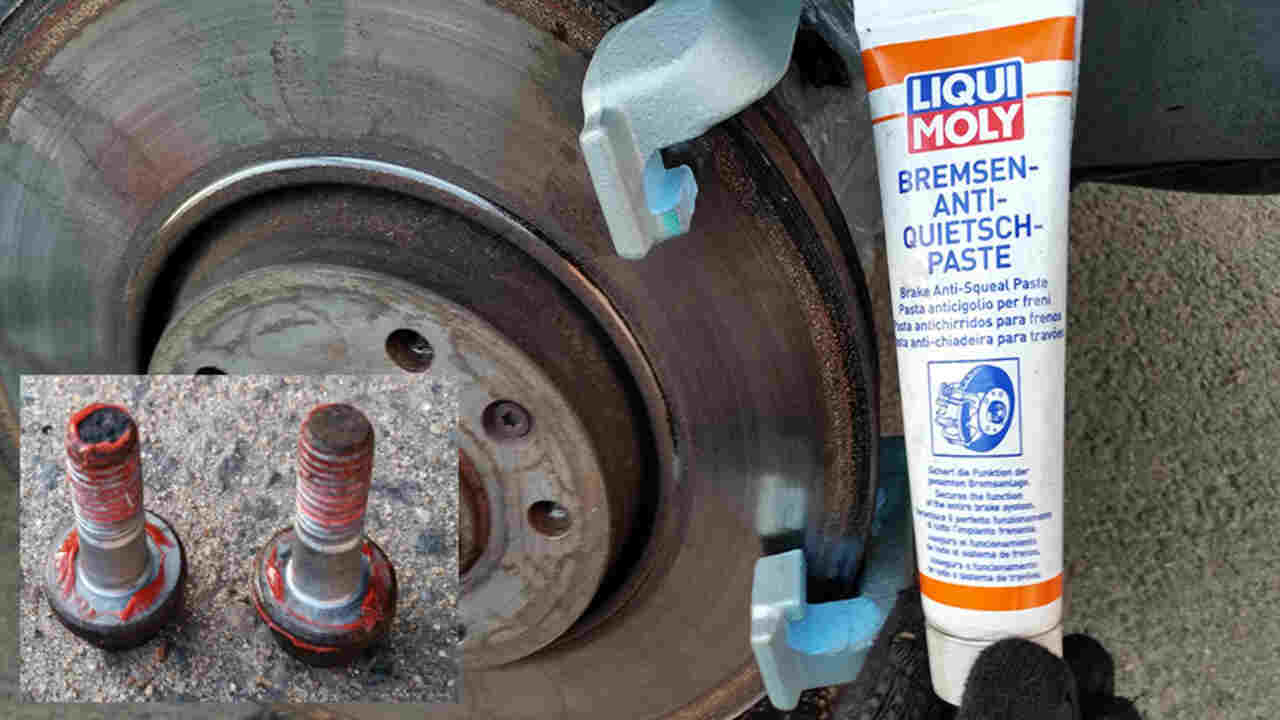
Applying Anti-Squeak Spray at the right time is crucial for optimal results. Using the spray when the temperature is within the specified range is recommended. Extreme heat or cold conditions should be avoided as they may affect the effectiveness of the spray. Consider applying the spray during routine maintenance or when you notice squeaking or friction.
Some applications may benefit from pre-treatment with a degreaser or cleaner before applying the spray. Always follow the manufacturer’s instructions for the best timing and results. By applying the spray at the appropriate time, you can effectively reduce squeaks and friction.
The Science Behind Anti-Squeak Spray
Anti-squeak sprays are formulated with lubricants that effectively reduce friction between surfaces. These sprays penetrate tight spaces and coat moving parts, ensuring smooth operation. Some Anti-Squeak Sprays also contain additives that protect against corrosion and wear. Factors like viscosity and temperature range influence the effectiveness of these sprays.
Ongoing research and development in the automotive industry aims to improve the formulations of Anti-Squeak Sprays, enhancing their efficiency and durability. By understanding the science behind Anti-Squeak Spray, users can make informed decisions when choosing and utilizing these products.
How To Avoid Anti-Squeak Spray Misuse
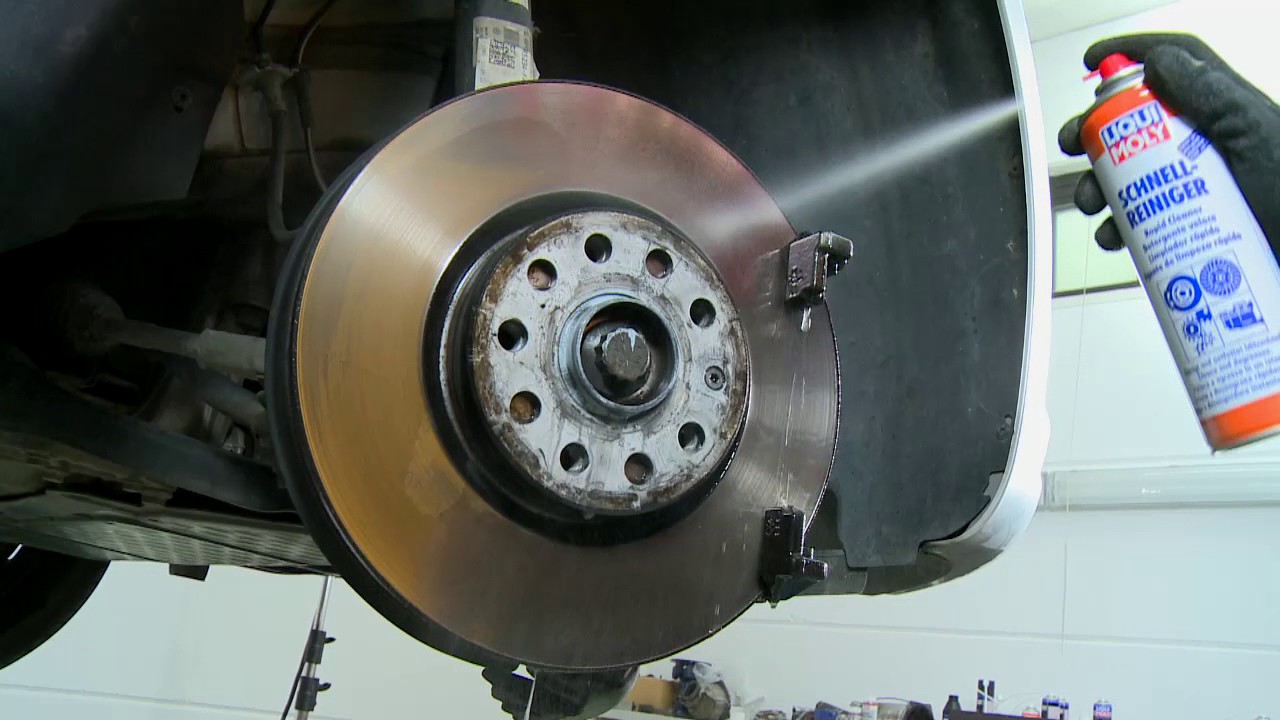
There are a few key points to remember to ensure proper use of Anti-Squeak Spray. First, avoid applying the spray to surfaces that may interfere with braking or traction control systems, as this can compromise their effectiveness. Additionally, it’s important not to use the spray on electrical components or sensitive areas, as it may cause damage or malfunctions.
Always follow safety precautions, such as wearing gloves and protective eyewear when applying the spray to protect yourself. It’s also recommended to use Anti-Squeak Spray in a well-ventilated area to minimize inhalation of fumes. Lastly, dispose of empty cans responsibly by following local regulations for hazardous waste.
Why Is Anti-Squeak Spray Essential?
Anti-squeak spray is vital for maintaining the longevity and smooth operation of moving parts. It can help reduce wear friction and prevent squeaking in various applications. The cost-effective solution improves safety and ensures optimal performance in industries like automotive, manufacturing, and household maintenance.
Anti-squeak spray is suitable for use on different materials such as metal, plastic, rubber, and wood. Its long-lasting effects make it an essential product to have on hand for any equipment that requires regular maintenance to perform optimally. When applied correctly, anti-squeak spray can help extend the machinery and equipment’s lifespan while improving overall efficiency.
Benefiter Of Anti-Squeak Spray
Mechanics and automotive technicians rely on Anti-Squeak Spray to eliminate noise in vehicle components, ensuring their customers a smooth and silent ride. Construction professionals also benefit from using Anti-Squeak Spray as it helps maintain the smooth operation of doors, windows, and hinges in various building projects.
For homeowners, applying Anti-Squeak Spray on items like garage doors and garden tools can help prevent annoying squeaks and prolong their lifespan. Additionally, industrial workers find Anti-Squeak Spray invaluable for maintaining machinery and equipment in factories and warehouses, ensuring optimal performance and reducing downtime.
Lastly, sports enthusiasts and outdoor adventurers use Anti-Squeak Spray on bike chains, camping gear, and other equipment to ensure a smooth and quiet experience during their activities.
Types Of Anti-Squeak Spray
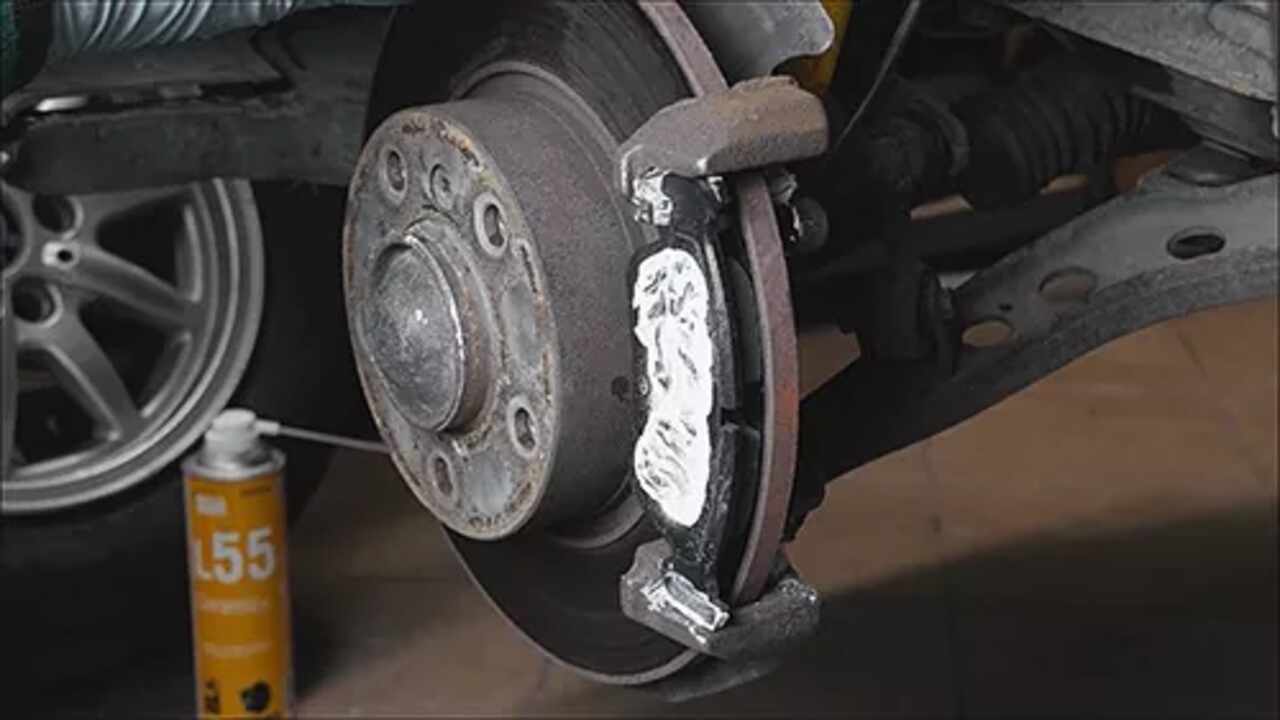
When preventing annoying squeaks and creaks, anti-squeak spray can be a lifesaver. Several types of anti-squeak sprays are available on the market, each designed for different purposes. Here are some common types of anti-squeak sprays:
- Silicone-Based: Silicone-based sprays are versatile and can be handy on various surfaces, including metal, plastic, and rubber. They provide long-lasting lubrication and can help reduce friction and eliminate squeaks.
- Teflon-Based: Teflon-based sprays are ideal for hinges, locks, and other moving parts. They create a smooth, slippery surface that helps to prevent squeaking and sticking.
- Graphite-Based: Graphite-based sprays are excellent for reducing friction between metal surfaces. They provide dry lubrication that doesn’t attract dirt or dust, making them ideal for sliding mechanisms and other metal-to-metal contact points.
- Grease-Based: Grease-based sprays offer superior lubrication and are often used in heavy-duty applications. They effectively reduce noise and friction in automotive components such as suspension systems.
Before using any anti-squeak spray, it is important to read the instructions carefully and test the product in a small, inconspicuous area to ensure compatibility with the surface you plan to treat.
Common Areas Of Application For Anti-Squeak Spray
Anti-Squeak Spray has a wide range of applications in various industries and settings. It is commonly used on door hinges, window tracks, and sliding mechanisms in homes and buildings to ensure smooth operation and eliminate annoying squeaks.
In the automotive industry, it is applied to brake calipers, suspension components, and engine belts to reduce noise and maintain optimal performance. Industrial machinery, conveyor belts, and moving parts in manufacturing facilities also benefit from applying Anti-Squeak Spray to prevent friction and wear.
Additionally, it finds utility in recreational vehicles like bicycles and motorcycles and household items such as garden tools, sports equipment, and kitchen appliances. You can keep things running smoothly and quietly by using Anti-Squeak Spray in these common application areas.
What Should You Avoid While Using Anti-Squeak Spray?
When using Anti-Squeak Spray, avoiding spraying near open flames or heat sources is important. Additionally, be cautious not to exceed the recommended temperature range for application. Avoid spraying on electrical components and refrain from applying excessive amounts of spray to prevent dripping or oversaturation. Lastly, steer clear of directly spraying onto painted surfaces to prevent potential discoloration.
Conclusion
Anti Squeak Spray is a valuable tool for reducing and eliminating unwanted noise and friction in various applications. By following the correct application techniques, you can ensure optimal performance and longevity of your equipment and machinery.
It is important to apply the spray correctly, at the right time, and in the appropriate areas to achieve the desired results. Understanding the science behind Anti-Squeak Spray and its benefits will help you make informed decisions when choosing the right product for your needs.
Remember to avoid any misuse and follow safety precautions while using Anti-Squeak Spray. Incorporating this simple yet effective solution into your maintenance routine can greatly improve the functionality and lifespan of your equipment.
Frequently Asked Questions
4.What Can I Spray On My Brakes To Stop The Squeaking?
Ans: To stop the squeaking of brakes, you can use an anti-squeak spray. Apply it to the brake pads or shoes in a well-ventilated area while wearing protective gloves. If the squeaking persists, it’s advisable to have your brakes inspected by a professional.
2.Will Wd40 Stop My Brakes From Squeaking?
Ans: Using WD40 to stop brake squeaks is not recommended, as it is a lubricant that can worsen the problem. Instead, use anti-squeak spray specifically designed for brakes. Clean the brake components thoroughly before applying the spray according to the manufacturer’s instructions.
3.Where Can I Use Anti-Squeak Spray?
Ans: Anti-squeak spray can be applied to surfaces like metal, rubber, plastic, and vinyl. It effectively eliminates squeaks in car doors, windows, and hinges. It’s also suitable for furniture parts such as drawers or cabinet doors. Always check the label to ensure compatibility with the intended surface.
4.How Long Does The Effect Of Anti-Squeak Spray Last?
Ans: The duration of the effect of anti-squeak spray can vary, lasting from a few days up to several months. Factors like the type and quality of the spray, as well as the conditions it’s used in, influence its longevity. To maintain effectiveness, reapply periodically or as needed, following the instructions on the spray can.
5.Is Anti-Squeak Spray Safe To Use On All Surfaces?
Ans: Anti-squeak spray is generally safe for most surfaces, but checking the product label for any restrictions or warnings is important. Avoid using it on surfaces that come in contact with food or skin. Remember to wear protective gloves and work in a well-ventilated area.
Meet Allen Yu, the Spray Guru behind Spray Guider. With a passion for transforming rides into rolling works of art, Allen Yu specializes in Bike and Car Sprays. Unleash your vehicle’s potential with expert tips and creative inspiration. Elevate your ride with Allen Yu—because every spray tells a story!
